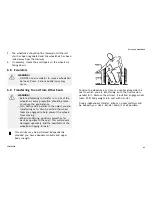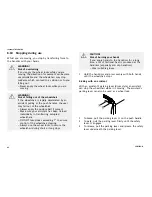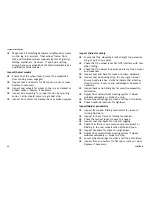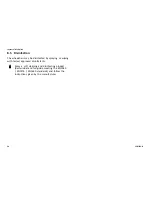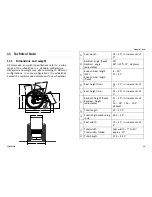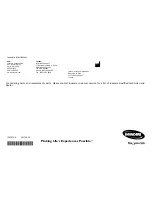
Maintenance
q
Clean upholstery and armrests with mild soap and
water.
q
Check that all labels are present and legible. Replace
if necessary.
8.4 Cleaning
Your wheelchair will serve you well for many years if you
clean it regularly.
IMPORTANT!
Sand and seawater can damage the bearings and
steel parts can rust if the surface is damaged.
– Only expose the wheelchair to sand and
seawater for short periods and clean it after
every trip to the beach.
IMPORTANT!
– Do not use coarse abrasives, aggressive cleaning
products or high-pressure cleaners. Never use
acids, alkalines or solvents such as acetone or
cellulose thinner.
– Always use ordinary household cleaning agents.
1.
Clean the cushions and metal parts with a soft, damp
cloth.
2.
Dry the wheelchair carefully with a cloth after using it
in the rain.
3.
If the wheelchair is dirty, wipe off the dirt as soon as
possible with a damp cloth and dry it carefully.
Regular cleaning will reveal loose or worn parts and
enhance the smooth operation of your wheelchair.
To operate properly and safely, your wheelchair
must be cared for just like any other vehicle. For
upholstery that is severely stained or surface finish
that is badly damaged, contact an authorized dealer
for further information.
Cleaning upholstery
For cleaning upholstery refer to the instructions on the label
on the seat, cushion and backrest cover.
Cleaning metal surfaces
Hot water and mild detergent on soft cloth should be use
to cleaning metal surfaces.
1.
Wipe down with damp cloth.
2.
Dry surface by wiping down with dry cloth.
Car polish and soft wax can be used to remove abrasions
and restore gloss.
Cleaning plastic surfaces
Plastic surfaces must be cleaned with soft cloth, mild
detergent and hot water.
IMPORTANT!
– Do not use solvents or kitchen cleaners to
clean plastic surfaces.
1.
Rinse surface with clean water.
2.
Dry surface by wiping down with dry cloth.
1587473-B
53



